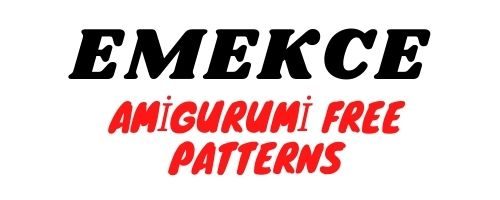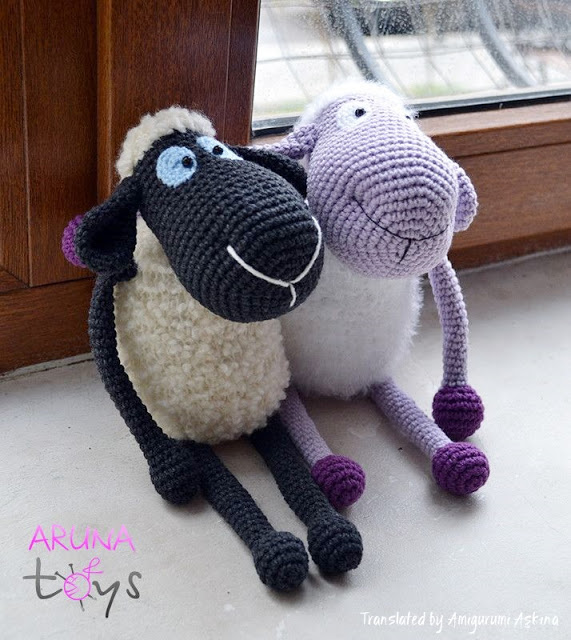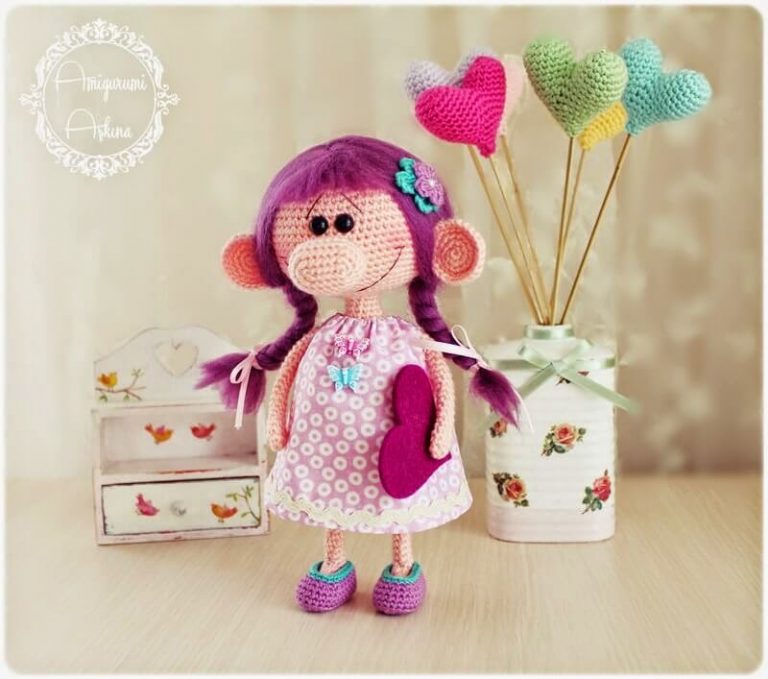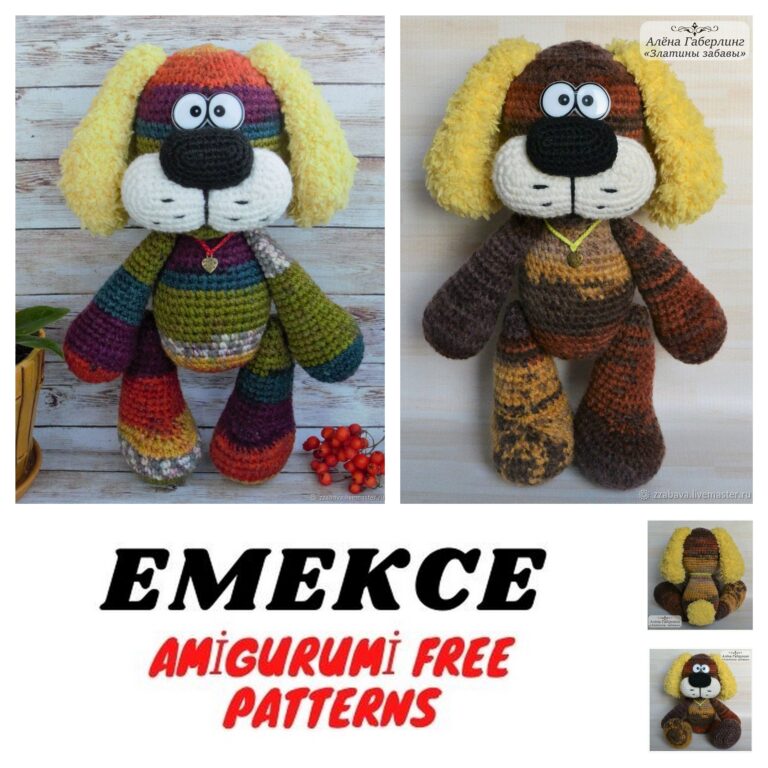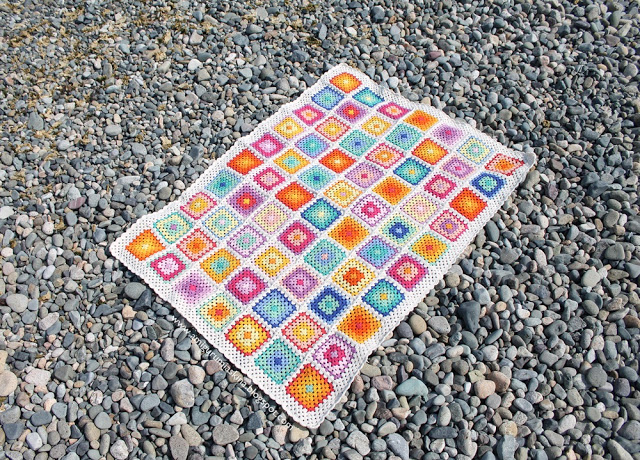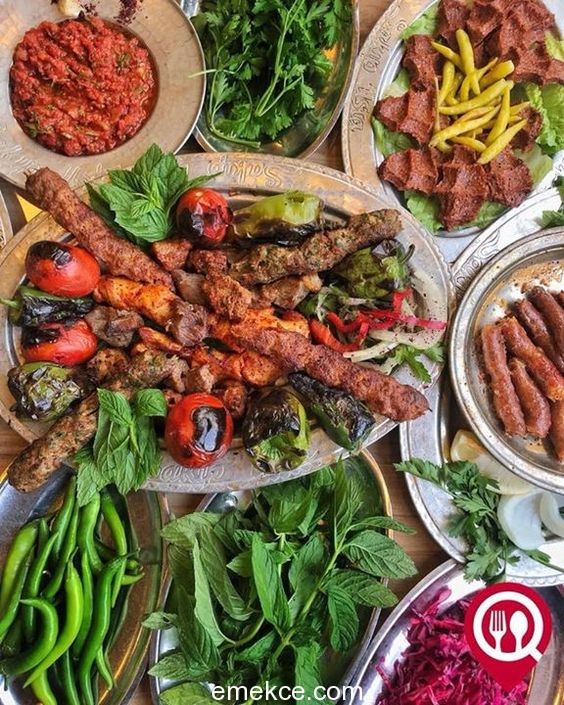Free Amigurumi Spotted Dog Crochet Pattern: Craft Your Adorable Canine Companion!
Calling all crochet enthusiasts and dog lovers alike! Our free Amigurumi Spotted Dog crochet pattern is your opportunity to create an irresistible, spotted canine friend. Whether you’re an experienced crocheter or a beginner, this project is tailored for everyone who adores furry companions. In this comprehensive guide, we will walk you through the process of crafting an endearing spotted dog amigurumi that is sure to become your new loyal buddy. So, grab your yarn, hooks, and let’s embark on this tail-wagging amigurumi adventure!
Abbreviations:
SC – single crochet
İNC – increase
DEC – decrease
CH – chain
PATTERN
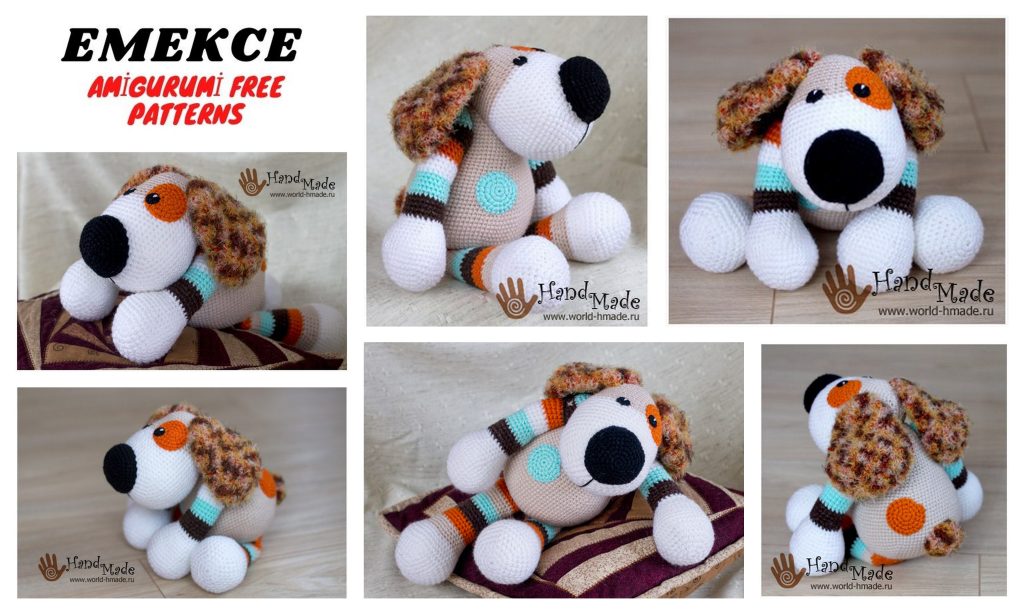
Knitting the head of a dog.
For knitting the head we will use white yarn “Bambino Nako” and beige “Children’s novelty”, hook No. 2.
1st row: We collect 2 air loops (hereinafter referred to as ch) and knit 6 single crochet (sc) in the second loop from the hook (in total 6 loops are obtained in a row).
2 row: * increase * – 6 times (12). What is placed between the stars, we knit the specified number of times.
4th row: * increase, 2 sc * – 6 times (24).
5 row: * increase, 3 sc * – 6 times (30).
6 row: * increase, 4 sc * – 6 times (36).
7 row: * increase, 5 sc * – 6 times (42).
8 row: * increase, 6 sc * – 6 times (48).
9 row: * increase, 7 sc * – 6 times (54).
10 row: * increase, 8 sc * – 6 times (60).
11-18 rows: 60 sc.
19 row: * decrease, 8 sc * – 6 times (54).
20 row: 54 sc.
21 row: Starting from this row, we knit with beige yarn – 54 sc.
22 row: * decrease, 7 sc * – 6 times (48).
23 row: 48 sc.
24 row: * decrease, 6 sc * – 6 times (42).
25-29 rows: 42 sc.
30 row: * decrease, 5 sc * – 6 times (36).
31 row: 36 sc.
32 row: * decrease, 4 sc * – 6 times (30).
33 row: 30 sc.
We begin to stuff the part.
34 row: * decrease, 3 sc * – 6 times (24).
35 row: * decrease, 2 sc * – 6 times (18).
We stuff more densely.
36 row: * decrease, 1 sc * – 6 times (12).
37 row: We knit decreases until the hole is completely closed.
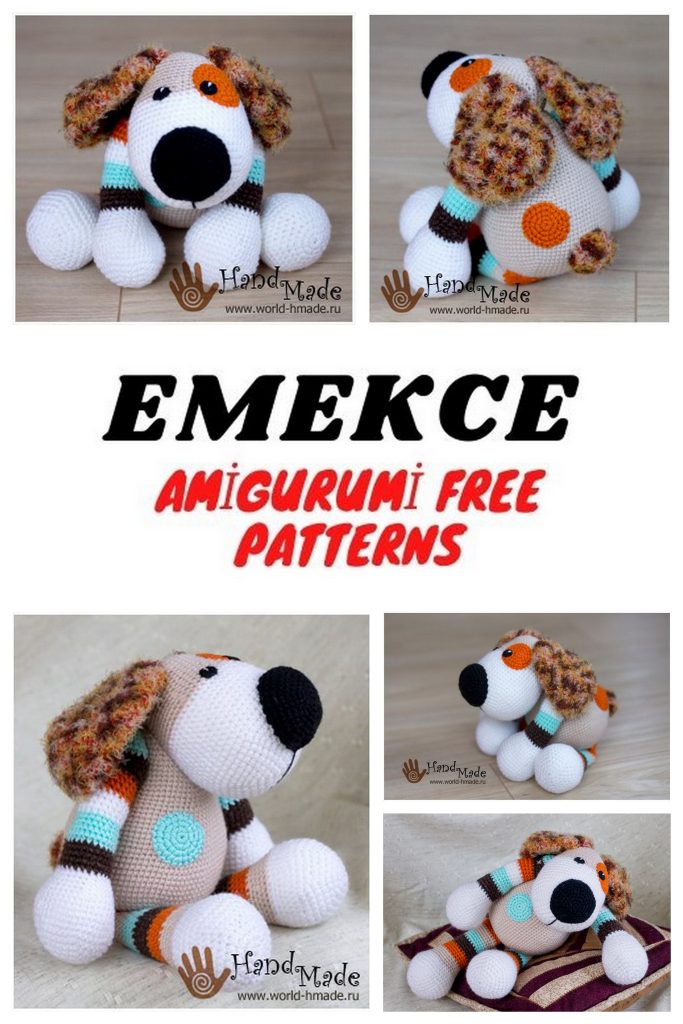
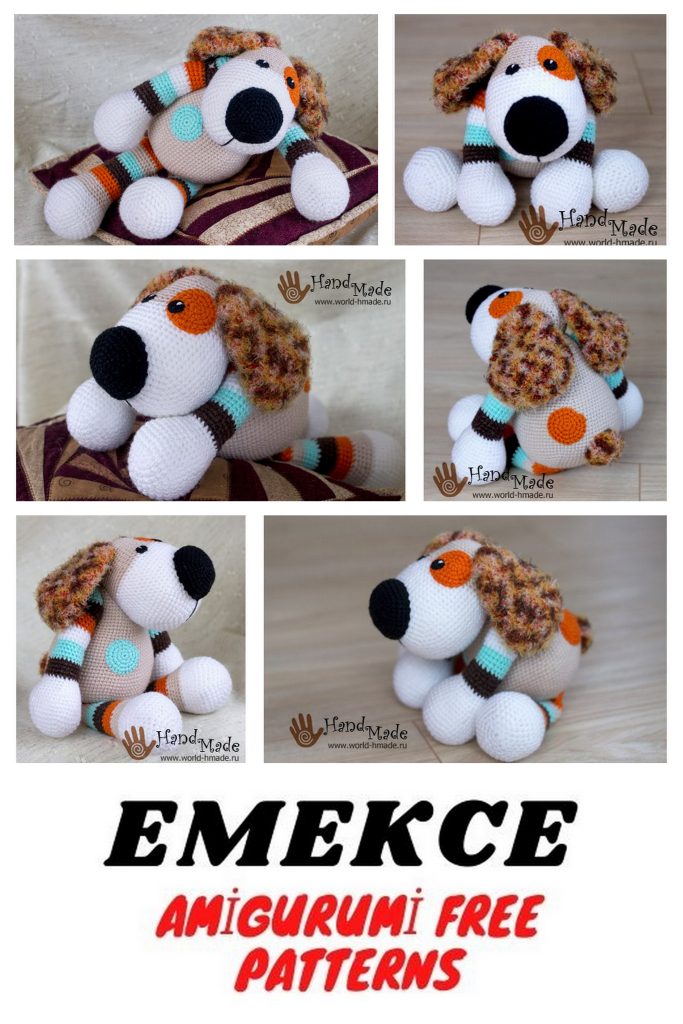
Knitting the torso of a dog.
1-10 rows: see the description of knitting head.
11 row: * increase, 9 sc * – 6 times (66).
12 row: * increase, 10 sc * – 6 times (72).
13 row: * increase, 11 sc * – 6 times (78).
14 row: * increase, 12 sc * – 6 times (84).
15 row: * increase, 13 sc * – 6 times (90).
16-22 rows: 90 sc.
23 row: * decrease, 13 sc * – 6 times (84).
24-25 rows: 84 sc.
26 row: * decrease, 12 sc * – 6 times (78).
27-28 rows: 78 sc.
29 row: * decrease, 11 sc * – 6 times (72).
30 row: 72 sc.
31 row: * decrease, 10 sc * – 6 times (66).
32-33 rows: 66 sc.
34 row: * decrease, 9 sc * – 6 times (60).
35-37 rows: 60 sc.
38 row: * decrease, 8 sc * – 6 times (54).
39 row: 54 sc.
40 row: * decrease, 7 sc * – 6 times (48).
41-42 rows: 48 sc.
43 row: * decrease, 6 sc * – 6 times (42).
44 row: 42 sc.
45 row: * decrease, 5 sc * – 6 times (36).
46 row: * decrease, 4 sc * – 6 times (30).
47 row: 30 sc.
48 row: * decrease, 3 sc * – 6 times (24).
49-50 rows: 24 sc. We knit 1 connecting column into the last loop and finish knitting the part.
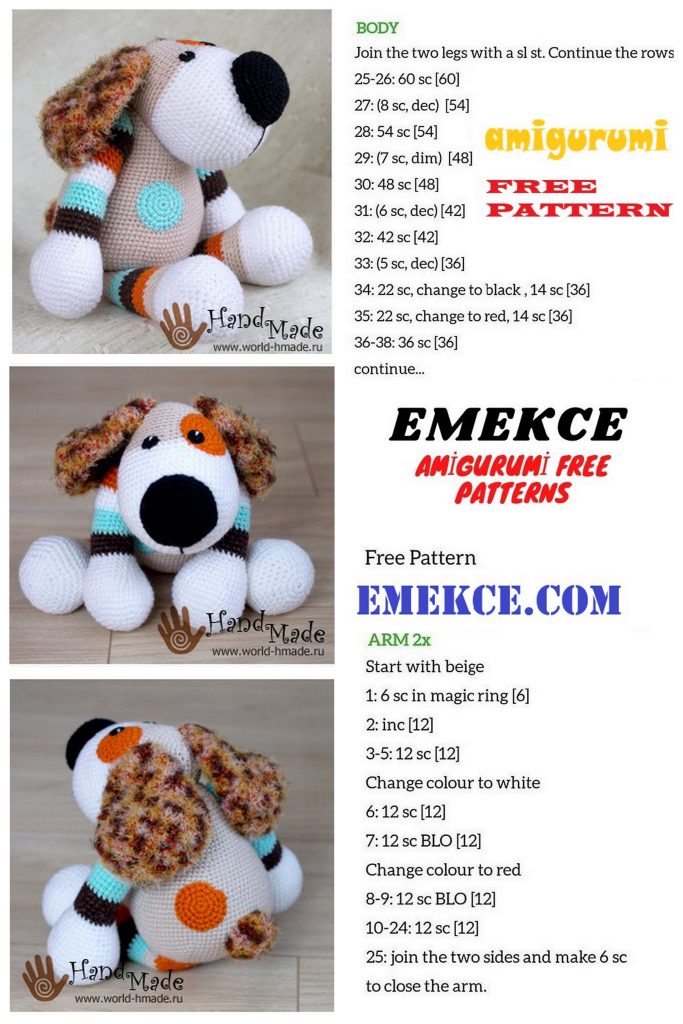
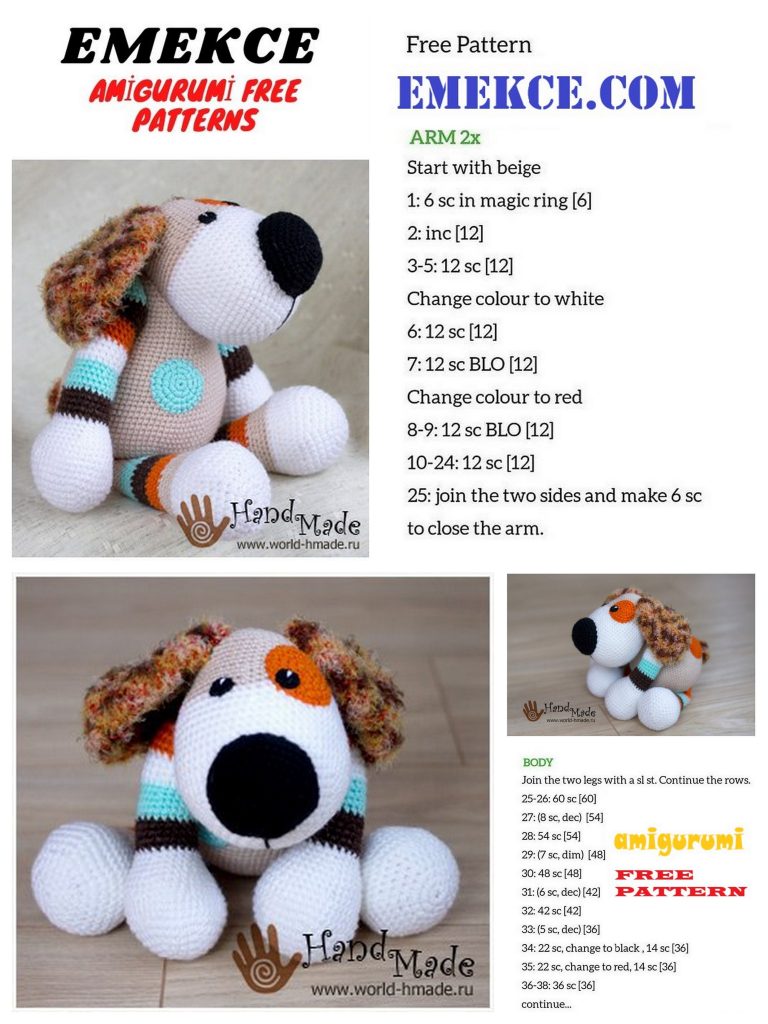
Knitting nose.
We knit the nose for the dog with black yarn.
1 row: 2 ch, 6 sc in the second loop from the hook (6).
2 row: * increase * – 6 times (12).
3 row: * increase, 1 sc * – 6 times (18).
4th row: * increase, 2 sc * – 6 times (24).
5 row: * increase, 3 sc * – 6 times (30).
6 row: * increase, 4 sc * – 6 times (36).
7 row: * increase, 5 sc * – 6 times (42).
8-10 rows: 42 sc. Connecting column in the last loop.
Knitting ears (2 parts).
We knit ears from yarn “Grass Stretch”, hook number 3.
1-4 rows: see the description of knitting the nose.
5 row: 24 sc.
6 row: * increase, 3 sc * – 6 times (30).
7 row: * increase, 4 sc * – 6 times (36).
8-9 rows: 36 sc.
10 row: * decrease, 4 sc * – 6 times (30).
11-12 rows: 30 sc.
13 row: * decrease, 3 sc * – 6 times (24).
14-16 rows: 24 sc.
17 row: * decrease, 2 sc * – 6 times (18).
18 row: 18 sc.
19 row: * decrease, 1 sc * – 6 times (12).
20 row: 12 sc.
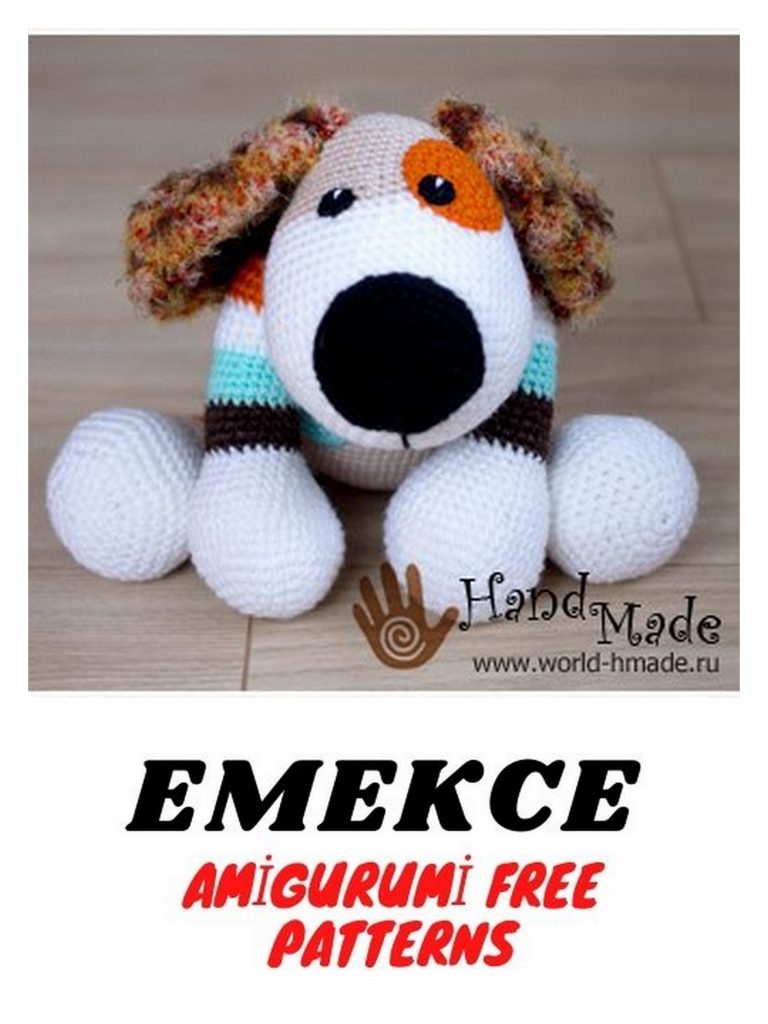
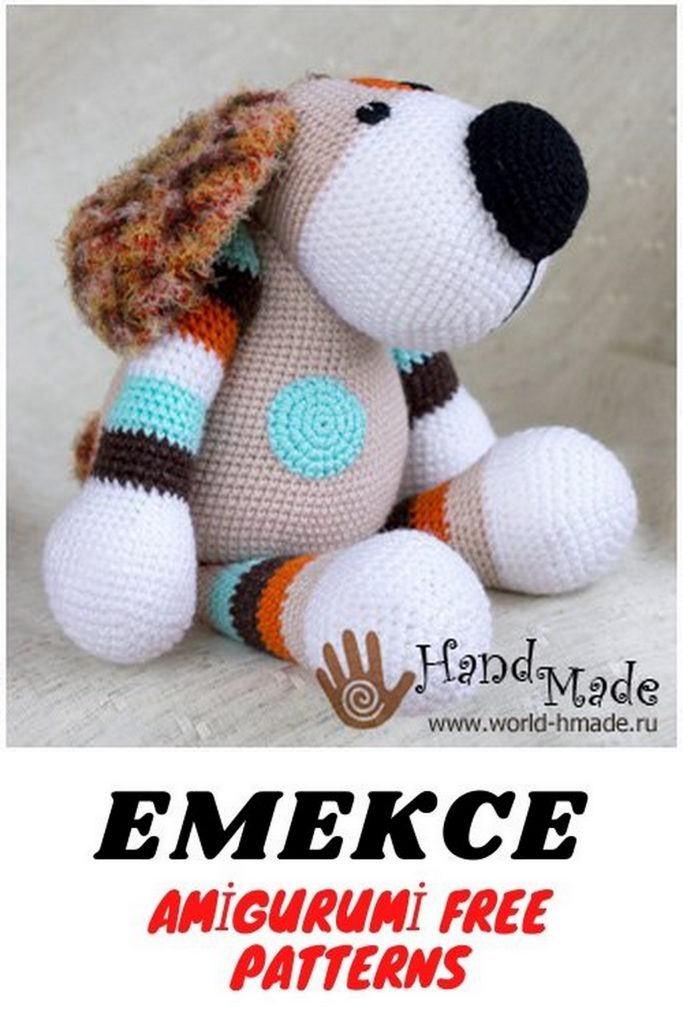
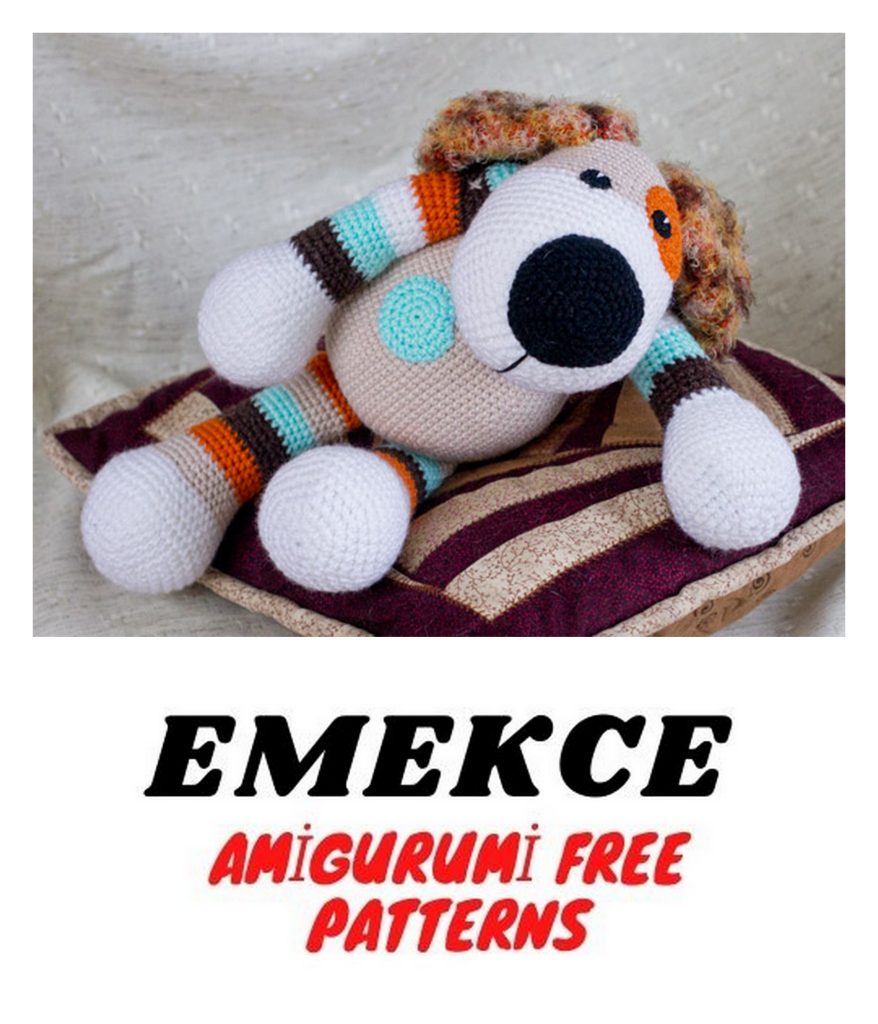
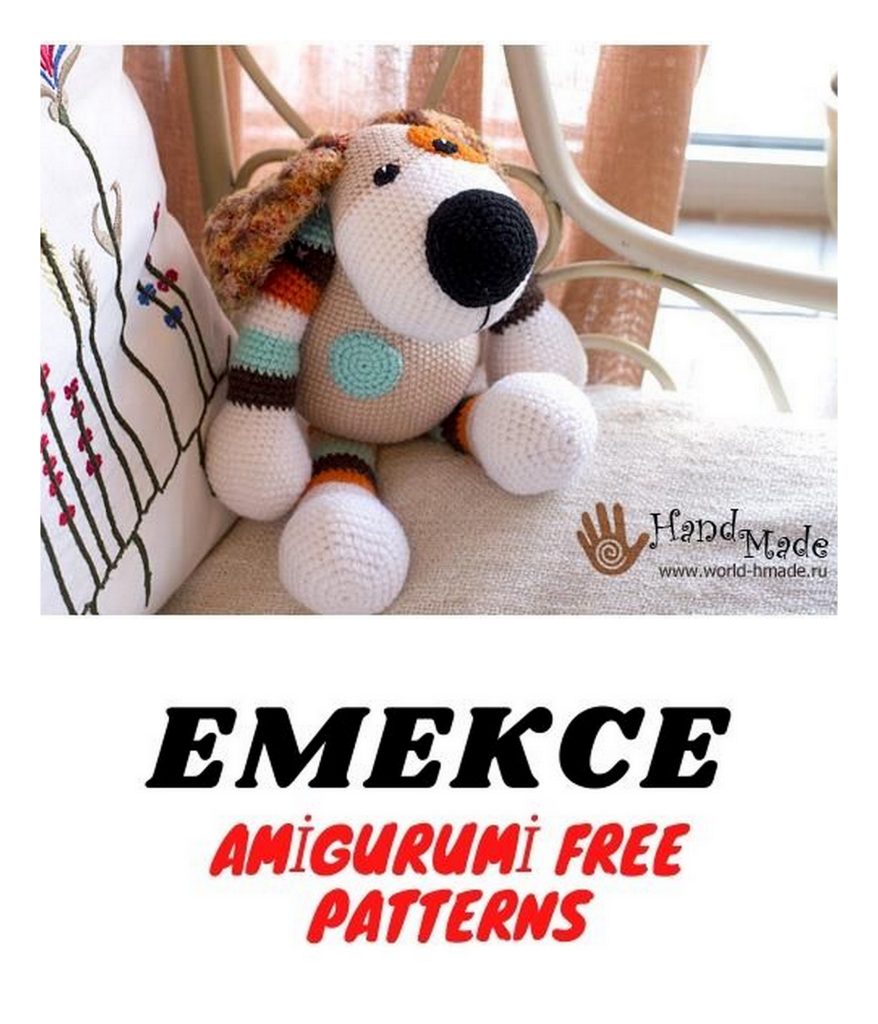
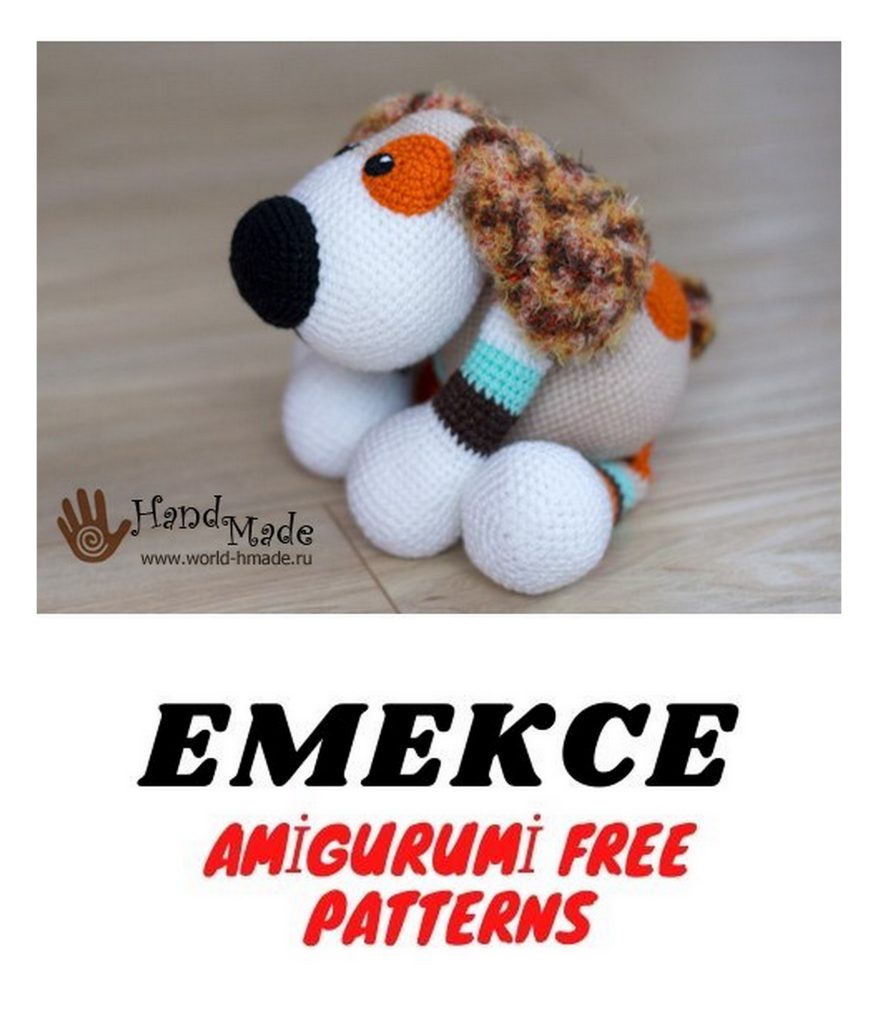
Knitting pens (2 parts).
We start knitting with white yarn (Bambino Nako).
1-7 rows: see the description of knitting the nose.
8-10 rows: 42 sc.
11 row: * decrease, 5 sc * – 6 times (36).
12-13 rows: 36 sc.
14 row: * decrease, 4 sc * – 6 times (30).
15 row: 30 sc.
16 row: * decrease, 3 sc * – 6 times (24).
17 row: 24 sc.
Next, we knit 1 sc in each loop of the row (a total of 24 loops in the row). If you think that the foot is too thick, then you can make 1 decrease at the beginning and in the middle of the row. In this case, there will be 22 loops in a row. Starting from the next row, alternate the color of the yarn.
18-21 rows: knit with brown yarn.
22-25 rows: knit with blue yarn.
26-29 rows: knit white yarn.
30-33 rows: knit with orange yarn.
34-37 rows: we knit with brown yarn.
38-39 rows: knit blue yarn.
Stuff the bottom of the foot. We continue to knit with blue yarn.
40 row: * decrease, 2 sc * – 6 times (18).
Next, we knit decreases until the hole is completely closed.
Knitting legs (2 parts).
1-7 rows: see the description of knitting the nose.
8 row: * increase, 6 sc * – 6 times (48).
9-10 rows: 48 sc.
11 row: * decrease, 6 sc * – 6 times (42).
12 row: 42 sc.
13 row: * decrease, 5 sc * – 6 times (36).
Next, we knit beige yarn.
14-15 rows: 36 sc.
16 row: * decrease, 4 sc * – 6 times (30).
17 row: 30 sc.
18 row: * decrease, 3 sc * – 6 times (24).
Next, we again knit 1 sc in each loop of the row, the same as we did when knitting handles. In a row 24 sc.
25-28 rows: orange yarn.
29-32 rows: brown yarn.
33-36 rows: blue yarn.
37-40 rows: beige yarn.
41-43 rows: orange yarn.
We continue to knit with orange yarn.
44 row: * decrease, 2 sc * – 6 times (18).
Stuff the bottom of the foot.
45 row: * decrease, 1 sc * – 6 times (12).
46 row: decrease until the hole is completely closed.
Knitting spots.
We knit specks of blue and orange yarn. The number of spots may be different.
1-4 rows: see the description of knitting the nose. In the last loop we knit a connecting column.
Ponytail knitting.
We knit a tail from the yarn “Grass Stretch”, use hook number 3.
1 row: 2 ch, 6 sc in the second loop from the hook (6).
2 row: * increase * – 6 times (12).
3 row: * increase, 1 sc * – 6 times (18).
4 row: 18 sc.
Knitting peephole.
It is better to knit eyes from thinner yarn, for example, from Iris. We knit in a circle, uniformly making increases, that is, we repeat 1-3 (or more, depending on the desired size of the eyes) rows in the description of knitting a dog’s nose. Then you can embroider a flare with a white thread.
